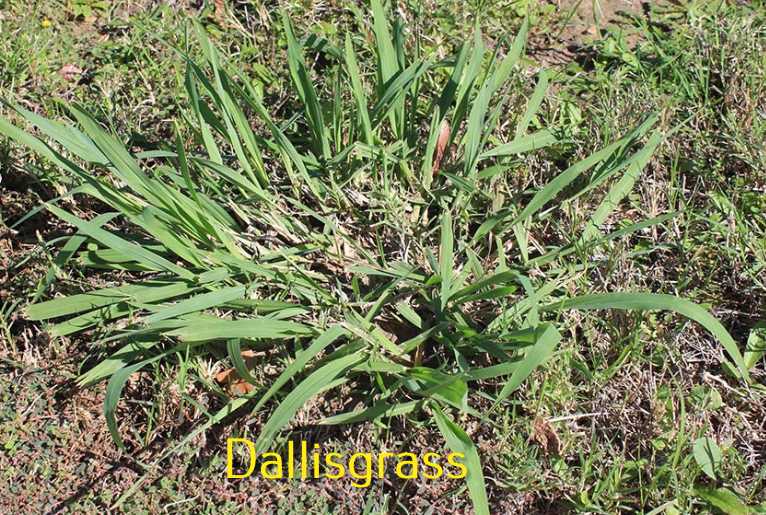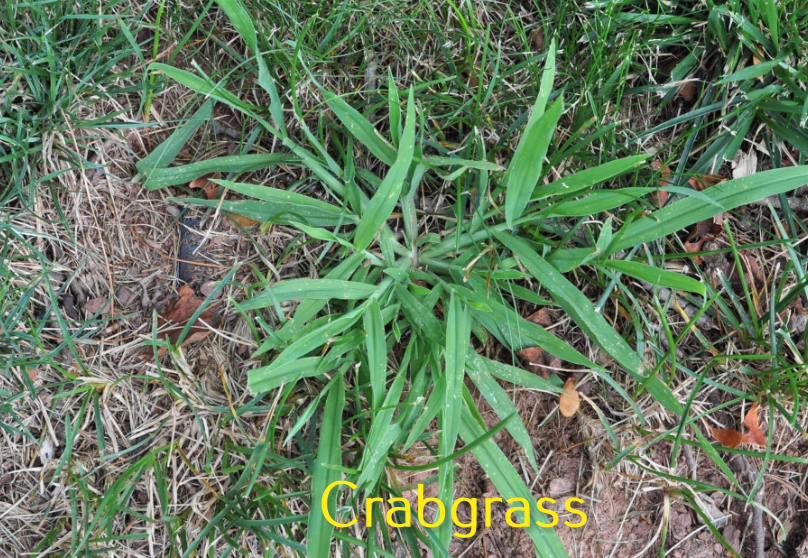Maintaining a perfect lawn is pure hard work. It takes a lot of time, and money to plant, fertilize, mow, and water a lawn. However, even after so much effort, you can still see some species of grass that you did not plant, that includes dallisgrass and crabgrass.
These grassy weeds are very hardy and will compete for water and nutrients with your lawn grass and will even outgrow it. Grassy weeds are tough to control as they are invasive and aggressive in growth.
The first step in controlling crabgrass and dallisgrass is to understand their differences. Here is a summary of key differences between dallis grass and crabgrass.
| Dallisgrass | Crabgrass |
| A perennial warm-season grass weed that grows back every year from the same roots. | Annual warm-season grass weed that germinates, seeds, and dies within a single year. |
| Aggressively spread from rhizomes and seeds. | Reproduces and spread by seed but also has prolific branching habit. |
| Has coarser textured grayish-green leaves that form near the bottom of the grass. | Can have hairy or smooth bluish-green leaves depending on the type. |
| Usually grows upright and taller | Grows and extends sideways like a crab |
| Has bigger seed heads | Seed heads are much smaller |
Dallisgrass vs. Crabgrass – Identification
Although they are all warm season-grass weeds, crabgrass and dallisgrass are different in several ways. Here is how to identify them:
Dallisgrass
Dallisgrass is a perennial (grows back every year from the same roots), warm-season grass that grows in clumps. Its leaves are greyish green, coarser textured, and form near the bottom of the grass.
This grass weed spreads from rhizomes and seeds. Its seed heads are much bigger compared to crabgrass, with black spots growing off the side of the stem. It is also taller and grows upright.

Crabgrass
Crabgrass is an annual warm-season grass that will germinate from seeds and dies the same year. It is shorter compared to dallisgrass but has broad leaves that are bluish-green. Its seed head is small and fine and grows out of the stem.
There are different types of crabgrass, each having slightly unique characteristics. Popular varieties include; short or smooth crabgrass, long or hairy crabgrass, Asian crabgrass, and Southern crabgrass.

Controlling Dallisgrass and Crabgrass
Both crabgrass and dallisgrass thrive during spring and summer. They all die in the fall after the first freeze and grow back in spring through late summer when soil temperature hits above 55°F. Here is how you can control them.
1. Pre-emergent herbicide
Pre-emergent herbicides should be applied before the grassy weeds germinate. Late winter or early spring is the best time to apply a pre-emergent crabgrass preventer. You might have to apply them more than once to completely kill dallisgrass.
You should not apply pre-emergent herbicide on newly seeded or sodded lawns because you will kill the good grass. You should wait until when you have mowed the lawn at least thrice.
Be sure to read and understand user instructions on the product label. Sometimes the pre-emergent herbicide to use will depend on the type of lawn grass you have. Some preventer herbicides are purely restricted to a particular type of grass.
For example, Zoysia, Kentucky bluegrass, tall fescue, and Bermuda, works well with a herbicide containing Quinclorac. On the other hand fine fescue, buffalograss and centipedegrass need mesotrione as the active ingredient.
2. Post-emergent herbicide
Post-emergent herbicides are effective for already-grown grassy weeds. It should be applied during the summer morning when the temperature is below 90°F, and the soil should be moist (water the lawn a day before application).
For fully grown grassy weeds, apply the herbicide twice 6 to 10 days apart. When using herbicide, it is important to protect yourself by wearing gloves, a mask, and a long-sleeved garment.
Also, adhere to manufacturers’ instructions on measurement and application as failure to follow instructions could kill the good grass.
3. Spot Treating with Roundup
Spot treating is very effective because you can hardly affect other lawn grass. First, you need to mow around the grassy weed such that the weed is taller than the lawn grass.
Mix the roundup herbicide surfactant in a bucket. Dip a sponge in the mix and apply it to the top part of the grassy weed (3 inches of the grass blade). Repeat the process one week later. Check when to replant grass after the roundup.
4. Use Baking Soda
Baking soda is a natural ingredient that can kill any plant it comes into contact with. It should be used in powder form and not diluted with water.
Spray little water on the weed and then sprinkle the baking soda. It might take a few days before the weed dies off. After the weed dies off, you need to uproot it and remove it from the yard.
5. Vinegar
Using vinegar as a weed killer is a naturally effective way to get rid of weeds. It is acidic, and it will burn plant tissue killing it within 24 hours when it comes into contact with the roots.
There are two methods you can use to prepare vinegar to kill grassy weeds like dallisgrass and crabgrass.
- Put vinegar, dishwashing soap, and salt in a plastic container and mix. Pour the mixture onto the weed. Using herbicidal vinegar works better than kitchen vinegar.
- Heat a sufficient amount of vinegar and put it in a heatproof container. Pour it on the weed while still hot. The high temperature and acidity will kill the weed.
6. Uproot the Grassy Weed
No matter which method you use to kill the grassy weed, you still have to get your hands dirty and pull them out. If the dead weed is left on the lawn, you won’t have a uniform lawn because the dead weed will be brown.
Instead of killing the weed and then pulling it out, you can dig out the weed using a claw feeder or pull it out with your hands. You should water the spot around the weed to soften the soil and make it easier to pull it out.
After removing the weed, fertilize the spot and plant good grass. The best time to uproot weeds is during spring when they are still small.
7. Grow a Healthy Lawn
Growing a healthy lawn will prevent grass weeds from growing. A dense turf chokes out existing weeds and prevents their seed from germinating. Do the following to grow a healthy lawn.
- Water the lawn once a week.
- Mow the lawn higher (2-3 inches)
- Aerate your lawn.
- Fertilize the lawn.
Does Crabgrass Killer Kill Dallisgrass?
Dallisgrass is a stubborn grass to kill once established. It is deep-rooted and even uprooting it once established is hard. To get rid of it completely, you need to target it soon after germination.
Post-emergent herbicides used to kill crabgrass can also be used to kill dallisgrass. However, you will have to apply it at least two or three times at two weeks intervals to kill dallisgrass completely.
Herbicides such as benefit + oryzalin, DCPA, Dithiopyr oxadiazon, Celsius, tenacity, and bensulide will kill both dallisgrass and crabgrass. For pre-emergent, you need to water the lawn with ½ inch of water to make the herbicide effective.
Conclusion
Dallisgrass and crabgrass are both warm-weather grasses referred to as weeds. They are very invasive, and if left on the lawn, they will compete for nutrients with the good grass and outgrow it. You can control them by using herbicide or other natural methods such as digging them out and using vinegar and baking soda.